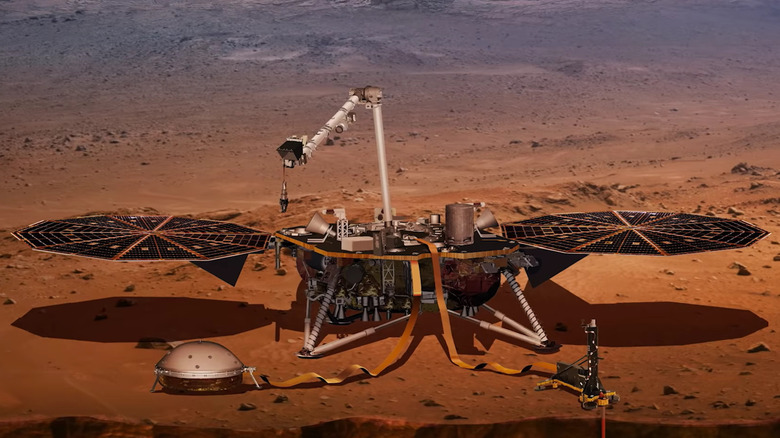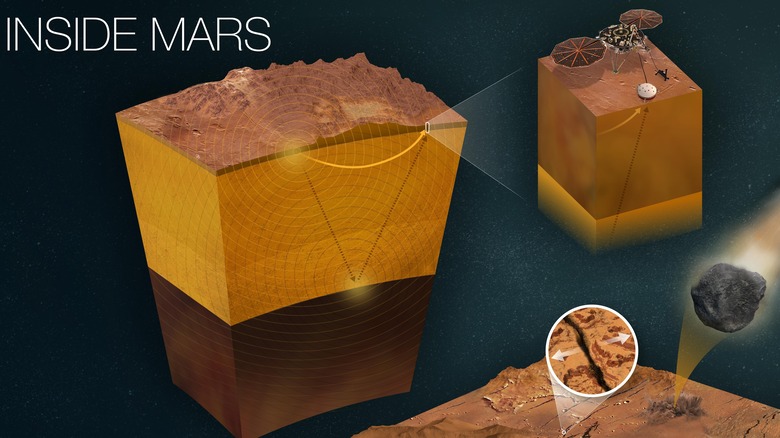How NASA Will Keep The InSight Mars Lander Working Until The Very End
NASA's InSight lander has been on Mars since 2018, collecting data on the marsquakes that shake the planet. The mission will soon come to an end, although the experts in charge of the lander plan to keep the hardware running for as long as they possibly can in the tough Martian environment. The original plan had been to shut down InSight's main instrument, its seismometer, by the end of June 2022. But now, the team will eke out the last remaining power to keep the seismometer running until August or possibly early September 2022 (via JPL).
This decision represents a balancing act because keeping the instrument running for a longer duration means the lander's overall power will run out faster. But, as the main instrument, the seismometer is an important scientific tool and by keeping it running, the lander may be able to detect another marsquake. The team has decided to prioritize the science, as InSight project manager Chuck Scott explained: "The goal is to get scientific data all the way to the point where InSight can't operate at all, rather than conserve energy and operate the lander with no science benefit."
So far the lander has detected more than 1,300 marsquakes, and the hope is that leaving the seismometer running will give the best chance of picking up more data before the mission comes to its inevitable end. "InSight hasn't finished teaching us about Mars yet," said the director of NASA's Planetary Science Division, Lori Glaze. "We're going to get every last bit of science we can before the lander concludes operations."
The dusty end of InSight
The InSight mission is slowly coming to an end because of a Martian environmental problem: dust. There are large amounts of dust on the surface of Mars, which due to high winds can get blown up into large dust storms. This dust coats everything, including the solar panels with which InSight collects power from the sun.
With the accumulation of dust on the solar panels, the engineers overseeing InSight have had to get creative about how to keep the mission going. The lander has previously used the scoop of the end of its robotic arm to dump more dust onto its panels, which helped to sweep off some of the grains stuck there. And sometimes the Martian wind has helped out by blowing off some of the dust from the panels in events called dust devils (via JPL).
But even with these helping events, the amount of power that InSight can generate has been dropping. With seasonal changes on Mars, there will be even more dust in the air in the coming months. While the panels originally generated 5,000 watt-hours of power per Martian day, now they are down to just 500 watt-hours per day. Despite the mission approaching its end, it has still been a success overall, well exceeding its original two-year mission plan and making discoveries about the interior structure of Mars, and recording the largest ever quake on Mars as well.

